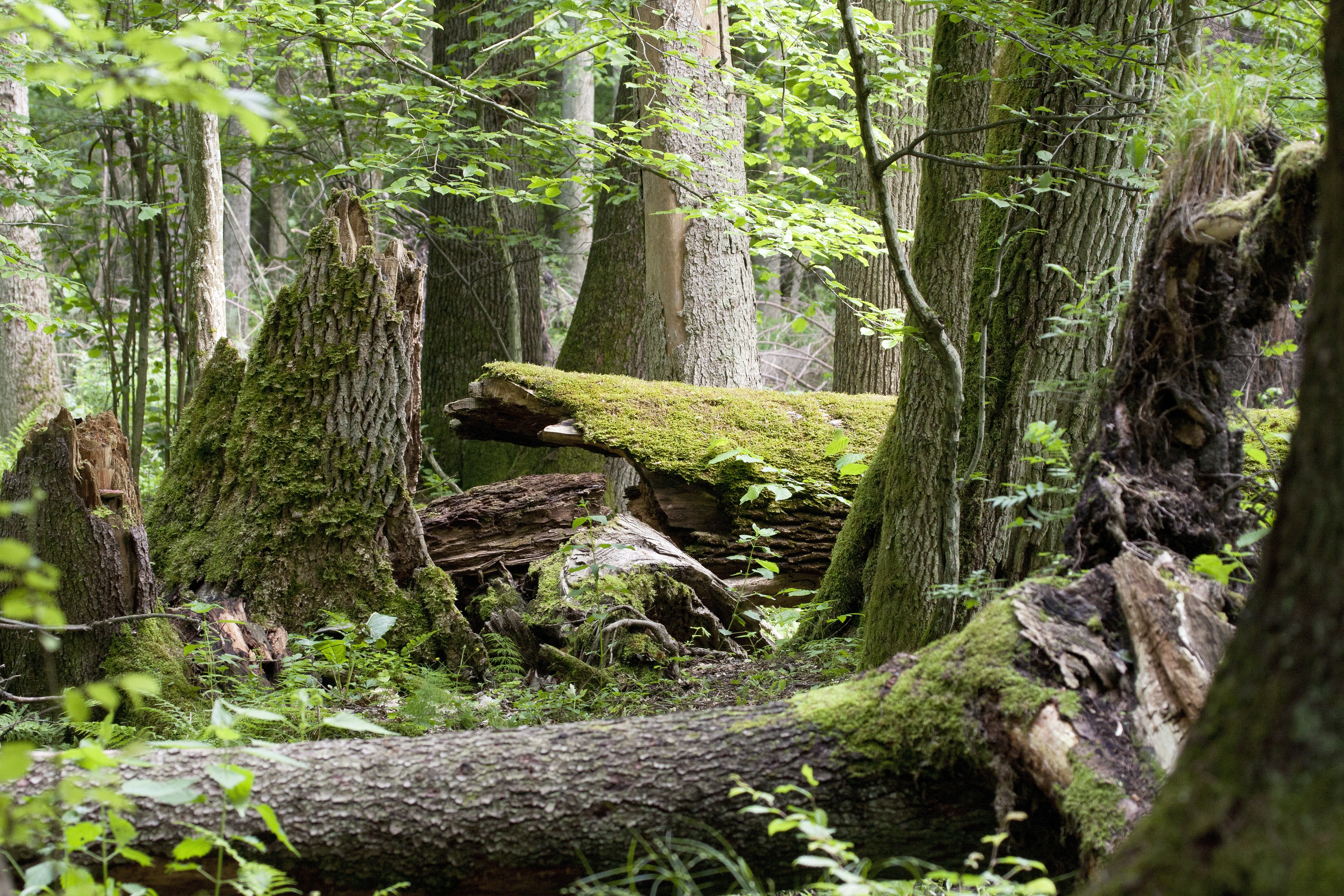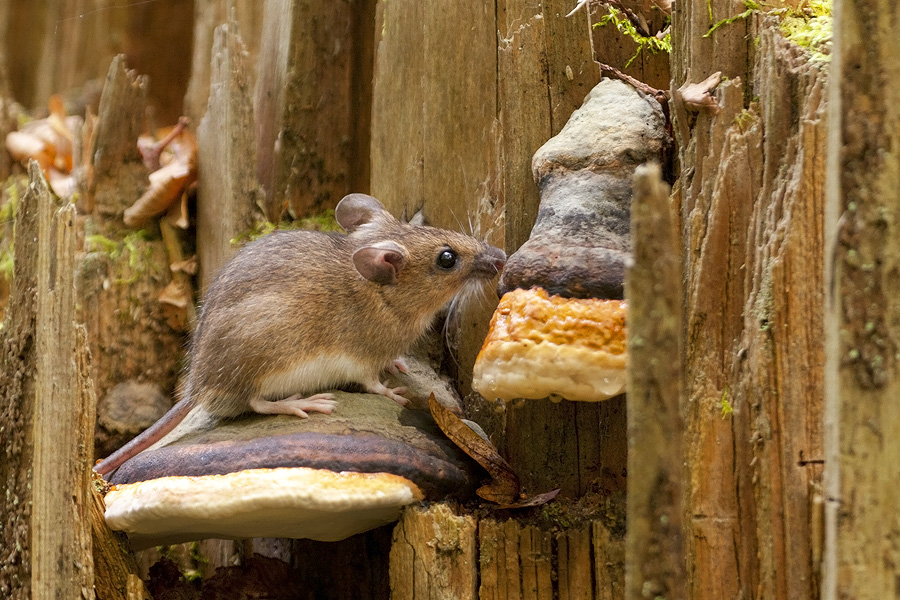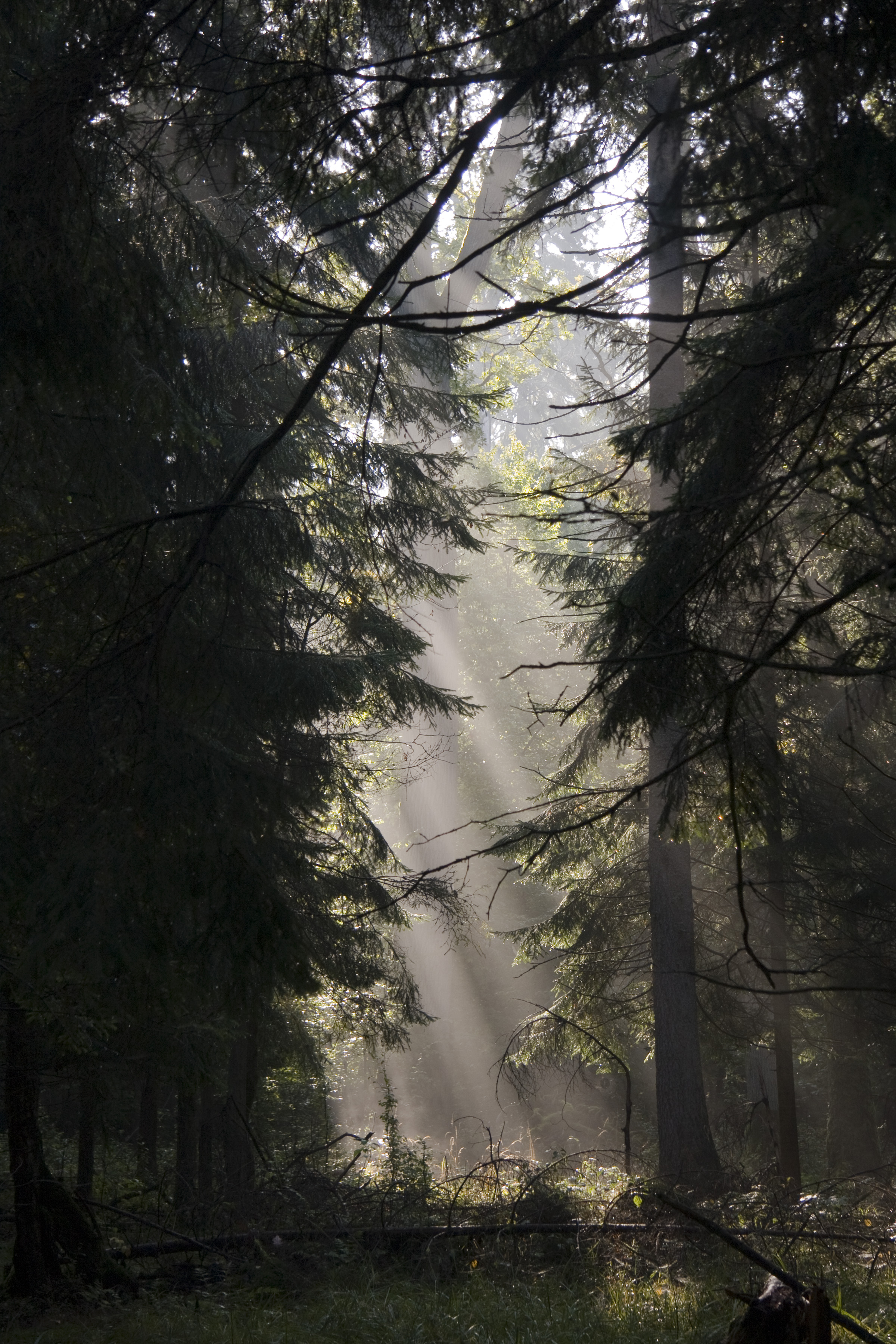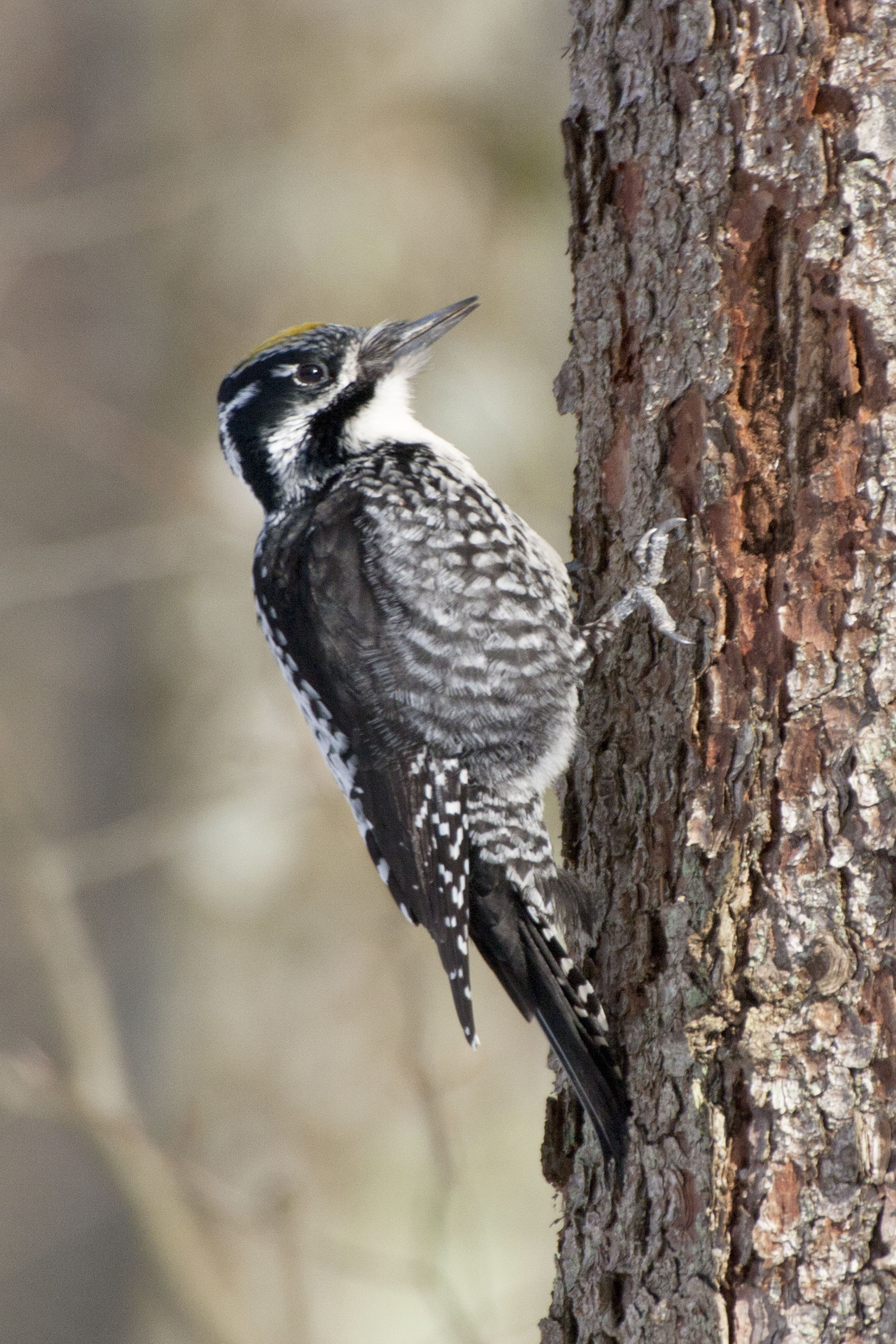Post-Congress Field Trip
Post-congress field trip (27-29 September 2019) is organized to allow participants experiencing the Białowieża Forest ecosystems. The field trip will cover a range of forms of nature conservation. The trip will start from Warsaw on 27 September afternoon and participants will arrive back in Warsaw at afternoon on 29 September (see the conference program for exact hours).
The Białowieża Forest
The Białowieża Forest is a large (1500 km2) forest complex stretching over the Polish-Belarusian border (40% vs. 60%, respectively). The most common forest association of the Białowieża woodlands is the oak-lime-hornbeam forest. Oak and lime, with admixture of spruce and maple, form the upper canopy cover. The lower layers are dominated by hornbeam and young limes. Typical of this forest type is the mass blossoming of flowers in spring, before the leaves develop. Later, in summer, canopy cover reaches 70-90%. Wet areas are covered by bog alderwoods and ash-alder forests alongside the forest’s rivers. Dry, sandy soils are covered with coniferous, pine-spruce forests. In the Białowieża Forest trees attain very large dimensions and long lifespans – oaks may grow to 2 metres of diameter at breast height and over 500 years of age. The tallest trees are spruces, reaching up to 55 meters.
The local climate is under strong continental influence, with dry summers and cold, snowy winters. The temperate climate, with mean annual precipitation of 624 mm and mean annual temperature of +6.6 ºC (data from years 1952-2005) shows a tendency to warm, especially during the winter period. The change in mean annual temperature since 1952 already reached the level of 1.3 ºC - more than mean global annual temperature change. Climate change already shows effects on organisms living in the forest. The vegetative season is relatively short, on average 208 days with a mean daily temperature > 5oC.
The forest is famous for containing the last extensive fragments of close-to-natural forests in the temperate zone. The Białowieża Forest still harbours a great diversity of life. For example, its fauna currently includes over 12 000 species, but specialists estimate that we may know only about 50% of the actual number of species living in the Forest. It is home to many species that are recently rare or extinct elsewhere ("relicts of the primeval forest"), which survived here due to the continuity of forest cover for the last 12 thousand years and close to 600 years long protection by Polish kings and Russian Tsars. At the beginning of the twentieth century, the first formal protected areas were established but on the other hand, commercial timber exploitation had started outside of them. Since then, most of the forest in the Polish part has been managed for timber. The Belarusian part (the border exists since 1944) used to be a zapovednik (1944-1956); the highest form on nature conservation is the Soviet Union), hunting reserve (1956-1992) and the national park since 1992.
A small portion of the forest (c. 47.5 km2) in the Polish part has been strictly protected (no intervention management) since 1921. This is recently the core area of the Białowieża National Park (BNP). The way of ecosystem functioning, existing within limits of the BNP are indicative of those that existed in European temperate primeval forests before their clearance and modification by silviculture. In 1977, Białowieża National Park was recognized as a UNESCO Man and Biosphere Reserve. Two years later BNP as a forest with “outstanding universal value”, unique on a global scale, received the status of a UNESCO World Heritage Site. In 1996, as a result of a national and international campaign addressed to the Polish government, the size of the Białowieża National Park was doubled to cover 100 km2. In 1992, the Belarussian National Park also became a Man and Biosphere Reserve and a 51 km2 section was included into transboundary World Heritage Site.
The forest is a living museum and research laboratory, a 'window into the past' through which we can gain insights into the ecology, functioning and adaptations of temperate forest organisms. It differs from other European temperate forests by (inter alia): large size of trees, multi-storey uneven-aged stands, species-rich tree communities, the large amount of standing and downed deadwood and uprooted trees, high abundance of tree cavities (potential hiding and nesting sites).
The local climate is under strong continental influence, with dry summers and cold, snowy winters. The temperate climate, with mean annual precipitation of 624 mm and mean annual temperature of +6.6 ºC (data from years 1952-2005) shows a tendency to warm, especially during the winter period. The change in mean annual temperature since 1952 already reached the level of 1.3 ºC - more than mean global annual temperature change. Climate change already shows effects on organisms living in the forest. The vegetative season is relatively short, on average 208 days with a mean daily temperature > 5oC.
The forest is famous for containing the last extensive fragments of close-to-natural forests in the temperate zone. The Białowieża Forest still harbours a great diversity of life. For example, its fauna currently includes over 12 000 species, but specialists estimate that we may know only about 50% of the actual number of species living in the Forest. It is home to many species that are recently rare or extinct elsewhere ("relicts of the primeval forest"), which survived here due to the continuity of forest cover for the last 12 thousand years and close to 600 years long protection by Polish kings and Russian Tsars. At the beginning of the twentieth century, the first formal protected areas were established but on the other hand, commercial timber exploitation had started outside of them. Since then, most of the forest in the Polish part has been managed for timber. The Belarusian part (the border exists since 1944) used to be a zapovednik (1944-1956); the highest form on nature conservation is the Soviet Union), hunting reserve (1956-1992) and the national park since 1992.
A small portion of the forest (c. 47.5 km2) in the Polish part has been strictly protected (no intervention management) since 1921. This is recently the core area of the Białowieża National Park (BNP). The way of ecosystem functioning, existing within limits of the BNP are indicative of those that existed in European temperate primeval forests before their clearance and modification by silviculture. In 1977, Białowieża National Park was recognized as a UNESCO Man and Biosphere Reserve. Two years later BNP as a forest with “outstanding universal value”, unique on a global scale, received the status of a UNESCO World Heritage Site. In 1996, as a result of a national and international campaign addressed to the Polish government, the size of the Białowieża National Park was doubled to cover 100 km2. In 1992, the Belarussian National Park also became a Man and Biosphere Reserve and a 51 km2 section was included into transboundary World Heritage Site.
The forest is a living museum and research laboratory, a 'window into the past' through which we can gain insights into the ecology, functioning and adaptations of temperate forest organisms. It differs from other European temperate forests by (inter alia): large size of trees, multi-storey uneven-aged stands, species-rich tree communities, the large amount of standing and downed deadwood and uprooted trees, high abundance of tree cavities (potential hiding and nesting sites).
The mammals of the Białowieża Forest
The Białowieża Primeval Forest is one of the last pristine woodlands in temperate Europe, where European faunal elements from North and South, East and West coexist. It harbours as many as 57 mammal species living in natural environments of forests and river-side marshes, and within small glades in traditional villages located in the forest. Although the forest is famous for large animals such as the European bison, wolf and lynx, the most diverse groups of mammals are rodents (18 species), bats (12 species) and predators (12 species). The woodlands of Białowieża also harbour 8 species of insectivores, 2 lagomorphs and 5 ungulates.
The community of forest rodents is dominated by bank voles and yellow-necked mice. Apart from common species a few rare, arboreal rodents inhabit the forest such as fat dormouse, common dormouse and forest dormouse. The biggest European rodent, the beaver, inhabits the rivers of the region. Root voles dominate in wet marshy habitats, and common voles in drier, agricultural land and pastures.
Terrestrial insectivorous mammals (including the smallest mammal of Białowieża Forest, the pygmy shrew – adult body mass 3.5 grams) occupy the same wide range of habitats as rodents do, but they have specialised in hunting invertebrates. The forest guild of small insectivores is strongly dominated by common shrews but in the vicinity of streams they are outnumbered by water shrews - the semiaquatic species.
The Białowieża ungulate community is one of the richest in temperate Europe. It includes the European bison, the largest terrestrial mammals of the remaining European fauna. However, the dominant ungulate species by both abundance and biomass is the red deer. Other ungulates species inhabiting the forests are wild boar, roe deer and moose.
The predator community became impoverished in the 19th and early 20th centuries by the extinction of the European mink and brown bear. Nowadays, 10 native and 2 introduced (the American mink and the racoon dog) can be found in the Białowieża Forest. The dominant species by numbers is the weasel (52% of the community) but due to its small size, it contributes only 2.6% to the carnivore biomass. In terms of biomass, the most important species of carnivores is the racoon dog. The largest species of the community are the wolf and lynx. Other carnivore species are badger, pine marten, polecat, stoat, stone marten, otter and red fox.
Among all mammals inhabiting the Białowieża Forest, 33 species are protected by low in Poland, including 12 species recorded in the Polish Red Data Book of Animals and 14 species in the IUCN Red List of Threatened Species.
Source:
Stachura K, Niedziałkowska M, Bartoń K. 2004. Biodiversity of forest mammals. W: Essays on mammals of Białowieża Forest. Red. Jędrzejewska B, Wójcik JM. Mammal Research Institute PAS, Białowieża : 13-24.
The community of forest rodents is dominated by bank voles and yellow-necked mice. Apart from common species a few rare, arboreal rodents inhabit the forest such as fat dormouse, common dormouse and forest dormouse. The biggest European rodent, the beaver, inhabits the rivers of the region. Root voles dominate in wet marshy habitats, and common voles in drier, agricultural land and pastures.
Terrestrial insectivorous mammals (including the smallest mammal of Białowieża Forest, the pygmy shrew – adult body mass 3.5 grams) occupy the same wide range of habitats as rodents do, but they have specialised in hunting invertebrates. The forest guild of small insectivores is strongly dominated by common shrews but in the vicinity of streams they are outnumbered by water shrews - the semiaquatic species.
The Białowieża ungulate community is one of the richest in temperate Europe. It includes the European bison, the largest terrestrial mammals of the remaining European fauna. However, the dominant ungulate species by both abundance and biomass is the red deer. Other ungulates species inhabiting the forests are wild boar, roe deer and moose.
The predator community became impoverished in the 19th and early 20th centuries by the extinction of the European mink and brown bear. Nowadays, 10 native and 2 introduced (the American mink and the racoon dog) can be found in the Białowieża Forest. The dominant species by numbers is the weasel (52% of the community) but due to its small size, it contributes only 2.6% to the carnivore biomass. In terms of biomass, the most important species of carnivores is the racoon dog. The largest species of the community are the wolf and lynx. Other carnivore species are badger, pine marten, polecat, stoat, stone marten, otter and red fox.
Among all mammals inhabiting the Białowieża Forest, 33 species are protected by low in Poland, including 12 species recorded in the Polish Red Data Book of Animals and 14 species in the IUCN Red List of Threatened Species.
Source:
Stachura K, Niedziałkowska M, Bartoń K. 2004. Biodiversity of forest mammals. W: Essays on mammals of Białowieża Forest. Red. Jędrzejewska B, Wójcik JM. Mammal Research Institute PAS, Białowieża : 13-24.
 |
 |
|
 |
 |
|
 |
 |
|